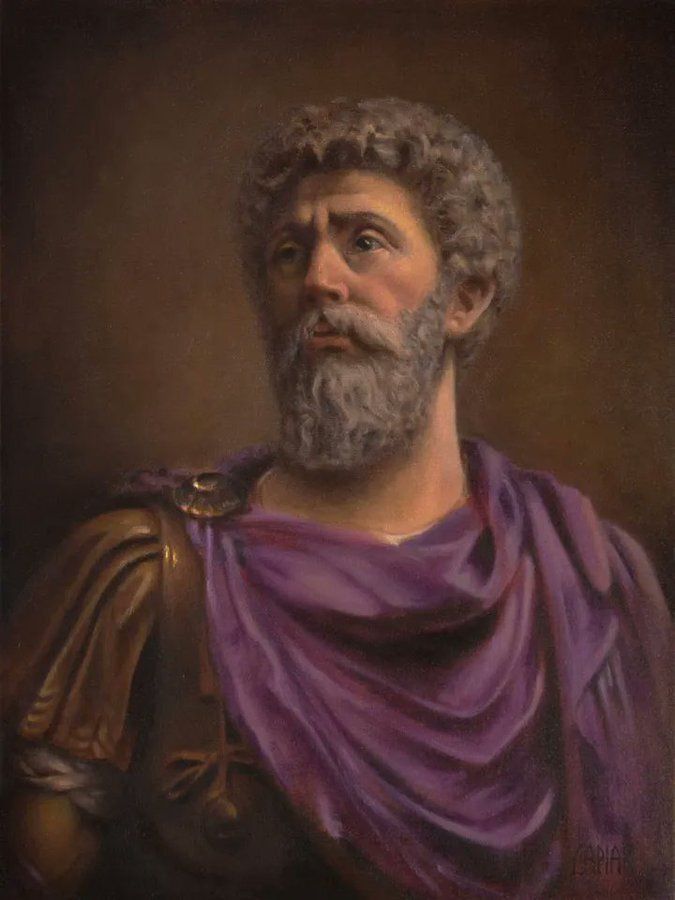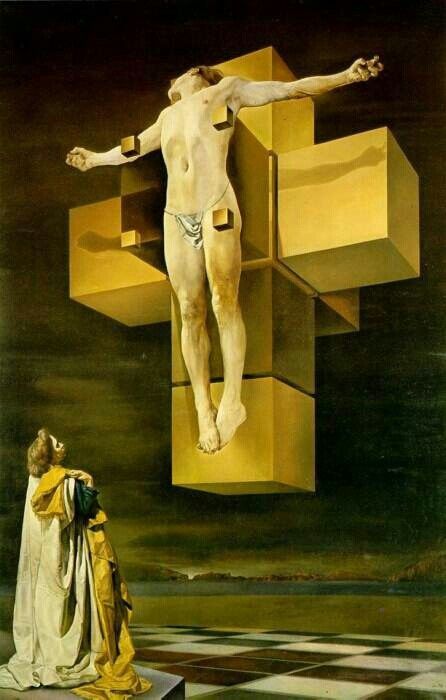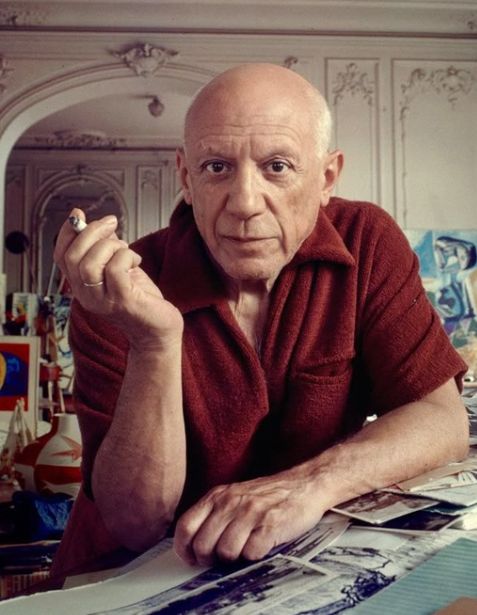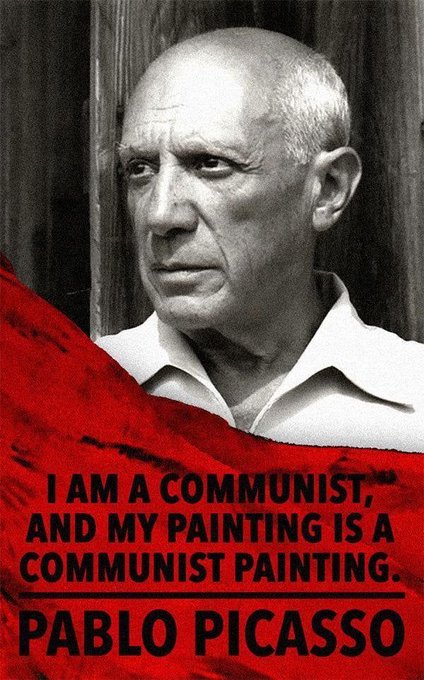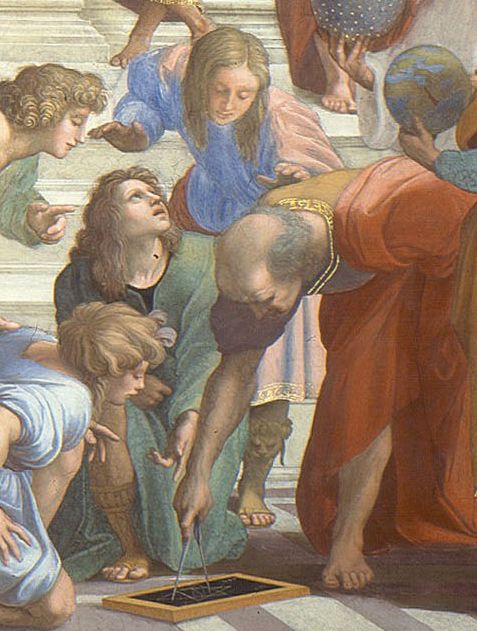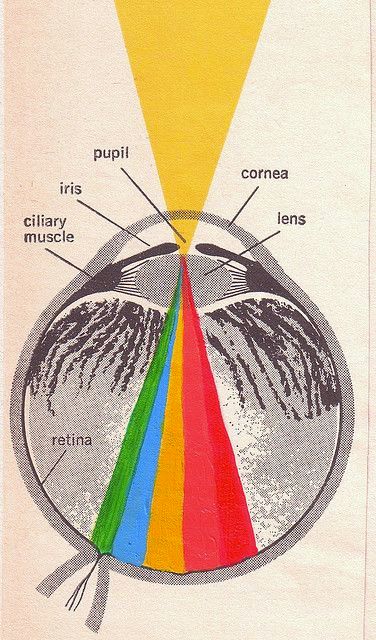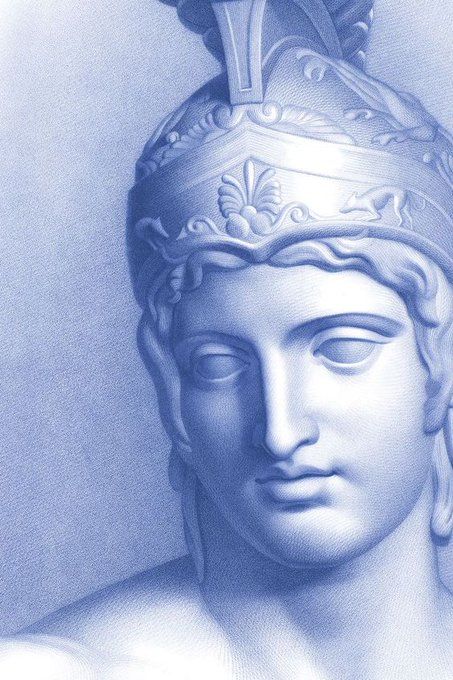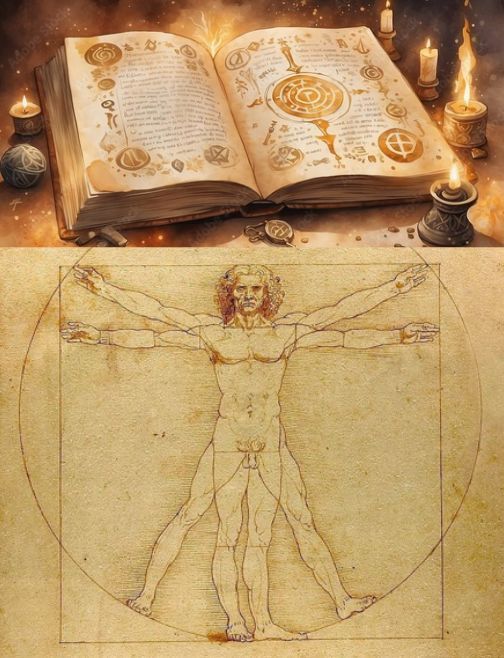Michelangelo - was a master of the Renaissance era. He was born in 1475 and displayed an early aptitude for art. Legend has it that at just 13 years old, he began sculpting under the tutelage of Lorenzo de Medici, the legendary ruler of Florence.
Michelangelo's talent soon gained him recognition across Italy. His monumental sculpture, "David," carved from a single block of marble, is considered a pinnacle of artistic achievement. Its completion in 1504 solidified his reputation as a consummate genius.
In 1508, he undertook another grand project: painting the ceiling of the Sistine Chapel in Vatican City. This monumental endeavor took four years to complete. His masterpiece, depicting scenes from the Bible, showcased his extraordinary skill in capturing human anatomy and emotion.
Throughout his life, Michelangelo's artistry extended beyond sculpture and painting. He was an accomplished architect, designing the magnificent dome of St. Peter's Basilica in Rome. Despite his fame, Michelangelo remained humble and dedicated to his craft. He once said, "If people knew how hard I had to work to gain my mastery, it would not seem so wonderful at all." His legacy endures, inspiring artists and admirers for centuries, a testament to the enduring power of creativity and human potential.




Michelangelo's talent soon gained him recognition across Italy. His monumental sculpture, "David," carved from a single block of marble, is considered a pinnacle of artistic achievement. Its completion in 1504 solidified his reputation as a consummate genius.
In 1508, he undertook another grand project: painting the ceiling of the Sistine Chapel in Vatican City. This monumental endeavor took four years to complete. His masterpiece, depicting scenes from the Bible, showcased his extraordinary skill in capturing human anatomy and emotion.
Throughout his life, Michelangelo's artistry extended beyond sculpture and painting. He was an accomplished architect, designing the magnificent dome of St. Peter's Basilica in Rome. Despite his fame, Michelangelo remained humble and dedicated to his craft. He once said, "If people knew how hard I had to work to gain my mastery, it would not seem so wonderful at all." His legacy endures, inspiring artists and admirers for centuries, a testament to the enduring power of creativity and human potential.




William Shakespeare - an English playwright, poet, and actor is known for showcasing his profound insights into human nature and emotions. His impact on literature and theater remains unparalleled.
His works explore themes of love, power, jealousy, and the human condition with unparalleled depth, insight and mastery. He is hailed as the greatest writer in the history of the English language, and rightfully so.
His mastery of language, characterized by poetic verse and vivid imagery, revolutionized literature. He coined countless words and phrases still in use today such as:
"All that glitters is not gold" - From "The Merchant of Venice."
"Break the ice" - From "The Taming of the Shrew."
"Good riddance" - From "Troilus and Cressida."
"In a pickle" - From "The Tempest."
"Wild-goose chase" - From "Romeo and Juliet."
Despite his profound influence, he lived a relatively private life, leaving much of his personal history shrouded in mystery.
Shakespeare's impact extends far beyond the stage; his words resonate in literature, film, and everyday conversation. His legacy echoes a profound understanding of human nature, making him an immortal figure in the world of the arts.




His works explore themes of love, power, jealousy, and the human condition with unparalleled depth, insight and mastery. He is hailed as the greatest writer in the history of the English language, and rightfully so.
His mastery of language, characterized by poetic verse and vivid imagery, revolutionized literature. He coined countless words and phrases still in use today such as:
"All that glitters is not gold" - From "The Merchant of Venice."
"Break the ice" - From "The Taming of the Shrew."
"Good riddance" - From "Troilus and Cressida."
"In a pickle" - From "The Tempest."
"Wild-goose chase" - From "Romeo and Juliet."
Despite his profound influence, he lived a relatively private life, leaving much of his personal history shrouded in mystery.
Shakespeare's impact extends far beyond the stage; his words resonate in literature, film, and everyday conversation. His legacy echoes a profound understanding of human nature, making him an immortal figure in the world of the arts.




Vitruvius - was a Roman architect, engineer, and writer. He is best known for his influential work "De Architectura," a comprehensive treatise on various aspects of architecture, engineering, and urban planning. This work still remains one of the most important sources of knowledge about Roman construction practices and architectural theory.
The Vitruvian Man is a famous drawing attributed to Leonardo da Vinci, and was inspired by Vitruvius's writings. Created around 1490, it is a representation of ideal human proportions inscribed within both a circle and a square, illustrating the concept of proportionality and symmetry in classical architecture.
Vitruvius outlined 3 fundamental principles of architecture:
Firmitas (Firmness): This principle emphasizes the structural stability and durability of a building. It involves the selection of appropriate materials and construction techniques to ensure that the structure can withstand environmental stresses and along with time.
Utilitas (Usefulness): This principle focuses on the functionality and practicality of a building. It involves designing spaces that are suited to their intended purpose, ensuring that they serve their occupants efficiently.
Venustas (Beauty): Also known as "Venus," this principle relates to the aesthetic qualities of a building. Vitruvius stressed the importance of creating structures that are visually pleasing and harmonious, considering proportions, ornamentation, and overall design.
Vitruvius' enduring influence lies in his systematic approach to architecture, which integrated technical knowledge with artistic and functional considerations, providing a lasting framework for architectural practice and theory for generations to come.




The Vitruvian Man is a famous drawing attributed to Leonardo da Vinci, and was inspired by Vitruvius's writings. Created around 1490, it is a representation of ideal human proportions inscribed within both a circle and a square, illustrating the concept of proportionality and symmetry in classical architecture.
Vitruvius outlined 3 fundamental principles of architecture:
Firmitas (Firmness): This principle emphasizes the structural stability and durability of a building. It involves the selection of appropriate materials and construction techniques to ensure that the structure can withstand environmental stresses and along with time.
Utilitas (Usefulness): This principle focuses on the functionality and practicality of a building. It involves designing spaces that are suited to their intended purpose, ensuring that they serve their occupants efficiently.
Venustas (Beauty): Also known as "Venus," this principle relates to the aesthetic qualities of a building. Vitruvius stressed the importance of creating structures that are visually pleasing and harmonious, considering proportions, ornamentation, and overall design.
Vitruvius' enduring influence lies in his systematic approach to architecture, which integrated technical knowledge with artistic and functional considerations, providing a lasting framework for architectural practice and theory for generations to come.




Ludwig van Beethoven - was a musical genius whose compositions revolutionized classical music. His early talent as a pianist and composer was evident from a young age. However, tragedy struck when he began to lose his hearing in his 20s, leading to deafness. Despite this immense obstacle, Beethoven continued to create some of the most iconic and emotionally powerful music in history.
His symphonies, including the triumphant 5th and the immortal 9th with its famous "Ode to Joy," are celebrated worldwide. His piano sonatas, like Moonlight and the Appassionata, showcase his mastery of the piano and deep emotional expression. He transcended classical norms, infusing his compositions with raw intensity, innovation, and an unwavering commitment to artistic integrity.
Beethoven's work marked a transition from the Classical to the Romantic era, influencing countless composers. His legacy continues through his enduring compositions, which continue to echo within the minds of audiences across generations, making Beethoven a towering figure in the annals of Western classical music.


His symphonies, including the triumphant 5th and the immortal 9th with its famous "Ode to Joy," are celebrated worldwide. His piano sonatas, like Moonlight and the Appassionata, showcase his mastery of the piano and deep emotional expression. He transcended classical norms, infusing his compositions with raw intensity, innovation, and an unwavering commitment to artistic integrity.
Beethoven's work marked a transition from the Classical to the Romantic era, influencing countless composers. His legacy continues through his enduring compositions, which continue to echo within the minds of audiences across generations, making Beethoven a towering figure in the annals of Western classical music.


Raphael Sanzio - a painter and architect of the High Renaissance, was born on April 6, 1483, in Urbino, Italy. His artistic prowess manifested at an early age, and by his teens, he was already a sought-after talent in the burgeoning art scene of Florence.
Raphael honed his skills and developed a distinctive style characterized by harmonious compositions and exquisite use of color. Raphael's body of works includes masterpieces such as "The School of Athens," a fresco that showcases his mastery of perspective and portrayal of intellectual pursuits.
His ability to infuse his subjects with emotional depth and humanity set him apart. His career flourished in the papal court of Julius II and Leo X, where he adorned the Vatican with frescoes, immortalizing his legacy.
Tragically, fate would take a sudden turn for Raphael. On April 6, 1520, his 37th birthday, he succumbed to an untimely death, possibly due to a fever exacerbated by overwork. This poetic alignment of birth and demise on the same day has enshrined his memory, highlighting the profound impact he had on the world of art.




Raphael honed his skills and developed a distinctive style characterized by harmonious compositions and exquisite use of color. Raphael's body of works includes masterpieces such as "The School of Athens," a fresco that showcases his mastery of perspective and portrayal of intellectual pursuits.
His ability to infuse his subjects with emotional depth and humanity set him apart. His career flourished in the papal court of Julius II and Leo X, where he adorned the Vatican with frescoes, immortalizing his legacy.
Tragically, fate would take a sudden turn for Raphael. On April 6, 1520, his 37th birthday, he succumbed to an untimely death, possibly due to a fever exacerbated by overwork. This poetic alignment of birth and demise on the same day has enshrined his memory, highlighting the profound impact he had on the world of art.




Auguste Rodin - was a visionary French sculptor known for revolutionizing the art form. His works, such as The Thinker and The Kiss, are iconic representations of the human mind and emotion.
Rodin's mastery of texture and movement challenged traditional conventions, influencing generations of artists.
His creative process often involved manipulating clay directly with his hands, capturing raw, visceral expressions.
Rodin's genius gained widespread acclaim, earning him a place among the greats of Western art. His impact endures, and his sculptures are displayed in museums worldwide.




Rodin's mastery of texture and movement challenged traditional conventions, influencing generations of artists.
His creative process often involved manipulating clay directly with his hands, capturing raw, visceral expressions.
Rodin's genius gained widespread acclaim, earning him a place among the greats of Western art. His impact endures, and his sculptures are displayed in museums worldwide.




Geoffrey Chaucer - is often called the "Father of English Literature." His masterpiece, "The Canterbury Tales," is a collection of stories told by pilgrims on a journey, offering a vivid panoramic keyhole of observation into medieval society.
Chaucer's wit, humor, and keen observations of human nature have immortalized him as a literary pioneer and captured the essence of his time while influencing generations of writers.
His work not only reflects the social complexities of the Middle Ages but also showcases his impact on the evolution of the English language and storytelling traditions.




Chaucer's wit, humor, and keen observations of human nature have immortalized him as a literary pioneer and captured the essence of his time while influencing generations of writers.
His work not only reflects the social complexities of the Middle Ages but also showcases his impact on the evolution of the English language and storytelling traditions.




Hippodamus of Miletus - was a 5th-century BCE Greek architect and urban planner, who revolutionized city design by introducing a grid pattern layout, now known as the "Hippodamian plan."
He applied mathematical principles and considerations for civic functionality in his designs, aiming for organized and accessible urban spaces.
His innovative ideas influenced the planning of several ancient cities, such as Piraeus and Rhodes.
He also contributed to political philosophy, emphasizing the importance of balanced governance.
His impact on urban planning has endured through centuries even up to the modern era.


He applied mathematical principles and considerations for civic functionality in his designs, aiming for organized and accessible urban spaces.
His innovative ideas influenced the planning of several ancient cities, such as Piraeus and Rhodes.
He also contributed to political philosophy, emphasizing the importance of balanced governance.
His impact on urban planning has endured through centuries even up to the modern era.


Pyotr Ilyich Tchaikovsky - was a Russian composer renowned for his rich and emotive music. He was born in Votkinsk, and displayed early musical talent and received formal training at the St. Petersburg Conservatory.
Tchaikovsky's compositions, including ballets like Swan Lake, The Nutcracker, and symphonies like Pathetique, reflect a harmonious blend of Western and Russian musical traditions.
Despite personal struggles, including a failed marriage, Tchaikovsky achieved international acclaim.
His works are characterized by melodic brilliance and emotional depth, and live on as staples in classical music, securing his legacy as one of the greatest composers of the Romantic era.

Tchaikovsky's compositions, including ballets like Swan Lake, The Nutcracker, and symphonies like Pathetique, reflect a harmonious blend of Western and Russian musical traditions.
Despite personal struggles, including a failed marriage, Tchaikovsky achieved international acclaim.
His works are characterized by melodic brilliance and emotional depth, and live on as staples in classical music, securing his legacy as one of the greatest composers of the Romantic era.

Rembrandt van Rijn - was a Dutch artist of the 17th century, and stands as a luminary in the realm of Baroque painting. He achieved unparalleled mastery in capturing the interplay of light and shadow, a technique that brought depth and emotion to his works known as chiaroscuro.
The Night Watch, one of his most iconic pieces, showcases his innovative use of chiaroscuro and dynamic composition.
He was renowned for his introspective and empathetic approach to portraiture, Rembrandt's canvases exude a unique humanism, unveiling the depth of his subjects' inner thoughts and emotions.
Despite financial struggles in his later years, Rembrandt's legacy echoes. His influence extends beyond his native Dutch Golden Age, resonating through centuries and inspiring generations of artists.




The Night Watch, one of his most iconic pieces, showcases his innovative use of chiaroscuro and dynamic composition.
He was renowned for his introspective and empathetic approach to portraiture, Rembrandt's canvases exude a unique humanism, unveiling the depth of his subjects' inner thoughts and emotions.
Despite financial struggles in his later years, Rembrandt's legacy echoes. His influence extends beyond his native Dutch Golden Age, resonating through centuries and inspiring generations of artists.




• • •
Missing some Tweet in this thread? You can try to
force a refresh



